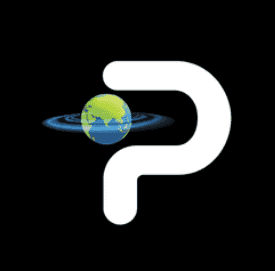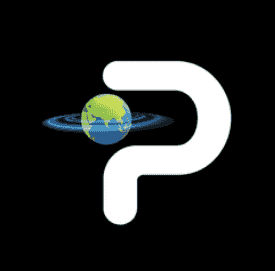It is not just a squabble on royalty; It is a copyright crucible, a high-to-high legal and philosophical performance that will define the future of intellectual property, creative industries and perhaps, the future of the soul of art. The invisible tendrils of machine learning are drawn on threads of artistic ownership, which really means to create at the age of algorithm music, forcing a recanning with it.
Conflict spark: when AI learned to make
The origin of this modern -day gordian knot lies in the breathtaking progress of generic AI. Tools such as Midzorney, Stability AI, and OpenEE's Dal-E have made a democratized construction, allowing anyone to connect complex scenes or texts with simple signs. Magic, however, comes at a cost-these powerful models are trained on the huge oceans of the existing man-made works: millions of pictures, billions of lines of code, the entire library of the text. Most of this training data is copyright.
This is where digital mistake lines emerge:
Artists lament: "Our work is their fuel!"
For a visual artist, AI produces images in his specific style to see, often feel like a violation of his own, unlikely. Musicians have heard the tunes that mimic their compositions. Writers absorb their entire Oeuvres into systems that can then produce narratives without atribution or compensation. Their main argument is clear: unauthorized data of copyright content for commercial AI training forms scraping copyright violations, to manufacture a factory on the theft's blueprint. They say that it devalues their unique contributions, threatens livelihood, and eventually reduces the concept of artistic ownership. Writers are making their way through the courts, accusing the guild's prosecutions, getty images, and major AI developers of mass the theft.
Defense of tech companies: "Innovation, growth, change!"
On the other hand, Tech veterans argue that their AI models do not "copy" in traditional sense; They "learn" patterns, a lot learn from studying masterpiece like a human artist. They bend heavy on the "fair use" principle, saying that training AI is a "transformational use" of existing functions, not derived. They portray AI as a powerful tool for creative growth, enable new forms of expression and democratizing access to artistic construction. They warns that highly restrictive AI regulation can prevent innovation, leading its nations to an edge in the AI race. They also highlight the ability to break creative blocks for AI, aid rapid prototypes and open new revenue currents for creators through AI-Assisted Workflow.
Unwanted Water of Creation: Major points of dispute
The conflict boils for many complex questions that struggle to answer the existing intellectual property law:
"Fair Use" Frontier: Is a commercial AI model scrapping billions of copyright images, texts or songs to train "Fair Use"? Artists argue that it is not anxious to learn accidental learning but on the industrial scale for profit. Tech companies argue that it is "transformative" because AI does not make accurate copies, but new combinations. It is a Central Legal Battleground in 2025.
Output Ownership and Author: Can AI be a writer? The US Copyright Office has said that AI-related material usually lacks human writer and therefore do not have copyright until significant human input. This question raises: If an AI makes something amazing, then who is its owner? Quick engineer? Model developer? nobody?
Compensation Model: Unresolved Puzzle: Even though the use of AI is considered legal, how are the artists compensated when their work indirectly contributes to new creations? The current artist compensation models are ill for this. There are discussions around the micropage system for collective bargaining for training data, new licensing framework and even artists' rights.
Attribution, authenticity, and transplantation: AI art and AI music become unlikely to human work, the questions of attribution become paramount. How do we know that a piece of material was man-made or AI-made? In addition, AI's ability enhances moral concerns about the unique style of an artist or the ability to copy the artistic identity to imitate the voice and artistic identity. Some solutions such as AI watermarking are being detected, although their efficacy remains under investigation.
Global variations: A patchwork of rules
Governments around the world are struggling with these challenges, causing a fragmented technology law landscape:
Transparency mandate of the EU AI Act: Europe has taken a more active, human-focused AI approach. While the Landmark EU AI Act (being phased through 2026) is mainly focused at risk, it includes provisions required by developers of generative AI model to disclose the summary of copyright content used for training. This push for AI transparency is an important step towards accountability.
US Copyright Office and Legal Battle: In the US, the American Copyright Office issues guidance on AI and Copyright, emphasizing the human writer. However, the true examination lies in federal courts, where major classes are undergoing prosecutions (eg, artist vs stability AI/midzorney/davement; author Guild vs. OpenAi/Google). These decisions will set an important example.
Japan's Liberal Stance: Japan has adopted a comparatively generous stance, looking at data scraping for AI training usually does not violate data analysis purposes, AI prefer innovation and competition.
UK's ongoing discussions: UK initially discovered a comprehensive copyright exception for data mining, but faced a significant backlash, causing ongoing ideas -discourse and no clear legislative path yet.
Future of creativity: Cooperation or collision?
This conflict is not just a legal curvature; This is a fight for the future of the creative economy. This forces us to ask: What does human creativity define when the algorithm can mimic talent? Will the artists be re -charged for "quick engineers", or AI will become a powerful, moral partner?
The forward passage will probably include a complex mixture of solutions:
New licensing model: The emergence of a specific license for AI training data can create new revenue currents for creators.
Group bargaining: Artists can play an important role in interacting on fair terms with the guild and association technical companies.
Technical Safety Measures: To develop strong AI safety measures including effective watermarking and detection tools for AI-related materials.
Evolving Copyright Law: Assembly will eventually need to update the copyright law to clearly address the unique challenges created by machine learning and generative AI.
Pay attention to human-AI Synergy: The most captivating future can lie in human-AI cooperation, where AI acts as a powerful assistant, freeing human artists to focus on concept, emotion and unique vision rather than exhausting.
The digital change of creativity is here. The ongoing confrontation between artists and technical companies is more than a legal dispute; This is a decisive moment for our shared creative heritage. How we navigate these unwanted water of creation will determine whether Elgorithm Muse becomes a partner in a new digital renaissance or a destructive force that erases the very foundation of human simplicity. The world is watching, to see who is strong in this fight for the soul of art.




